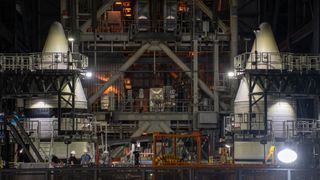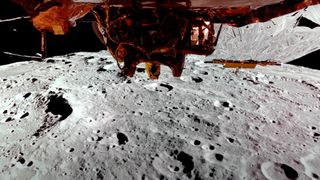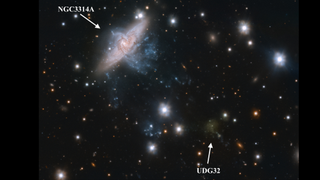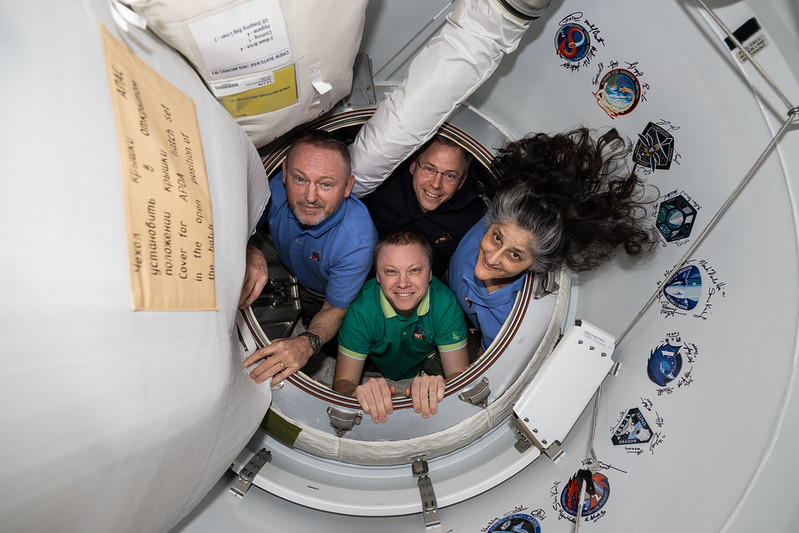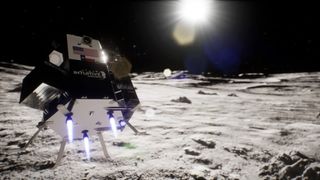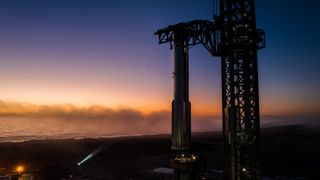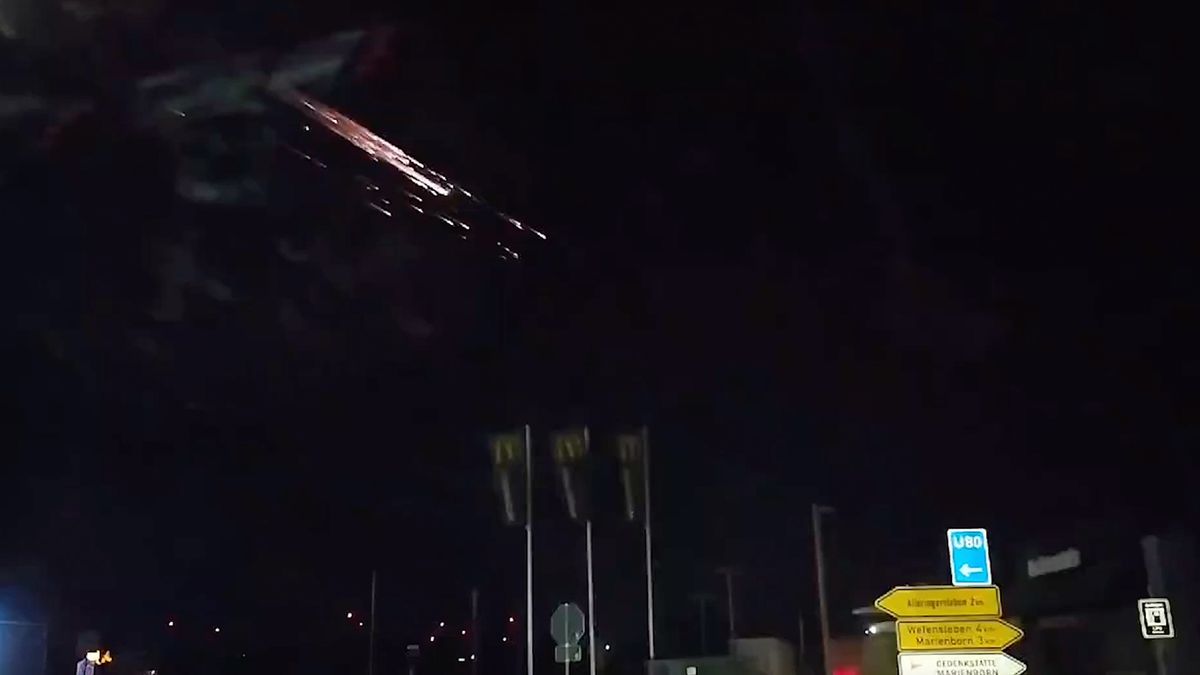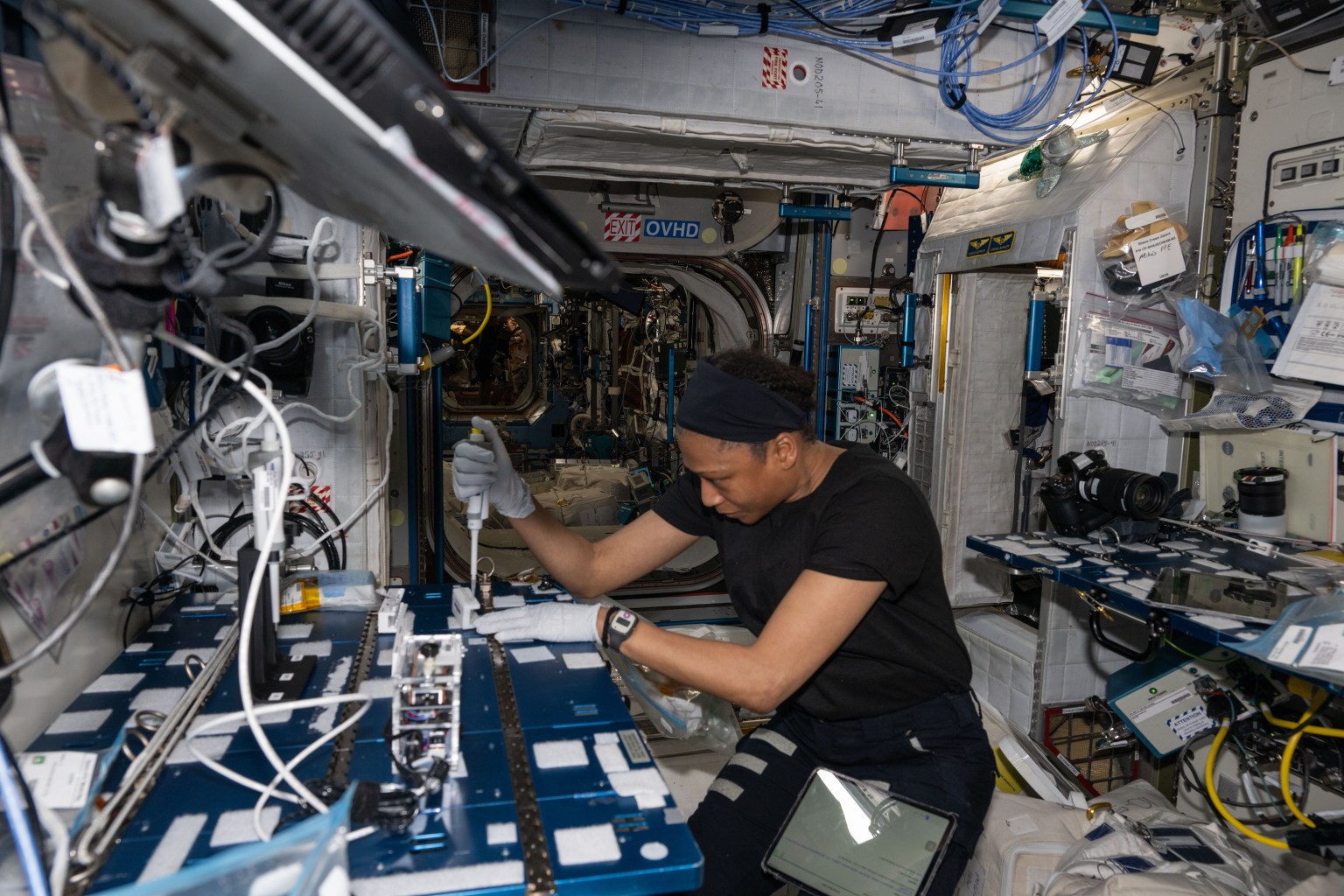The U.S. is in a race with China to get to the moon, amid potential changes to the Artemis program and turmoil at NASA, according to a House hearing on Wednesday. As Intuitive Machines’ IM-2 lunar lander sat on the pad awaiting its nighttime launch, a meeting of the House Committee on Science, Space and Technology’s space and aeronautics subcommittee took place on Feb. 26 to discuss the next steps of the Artemis program and how it plays into efforts to get to Mars. In the hearing, titled “Step by…
Read MoreCategory: Space Stations
Space stations in orbit or planned
Private Blue Ghost lander sees far side of the moon in breathtaking detail ahead of lunar landing (video)
Firefly Aerospace’s Blue Ghost lunar lander is sharing some amazing views from just above the moon. Blue Ghost beamed home gorgeous, up-close shots of the moon‘s far side on Feb. 24, just after lowering its orbit ahead of a Sunday morning (March 2) landing attempt. “That feeling you get when you look out the window and realize you’re almost home!” Texas-based Firefly wrote in a Feb. 26 X post, which shared a 93-second video of the Blue Ghost footage. Firefly Aerospace’s Blue Ghost lunar lander snapped this shot of the…
Read MoreSpaceX rocket launches private moon lander and NASA ‘trailblazer’ to hunt for lunar water (video)
CAPE CANAVERAL, Fla. — The private Athena lunar lander is on its way to the moon. A SpaceX Falcon 9 rocket lifted off shortly after sunset this evening (Feb. 26), carrying Athena and NASA’s ride-along Lunar Trailblazer orbiter aloft against a darkening sky here at NASA’s Kennedy Space Center (KSC). Athena — which was built by the Houston-based spaceflight company Intuitive Machines — carries 10 NASA science instruments, many of which are designed to hunt for signs of water ice. Lunar Trailblazer will do similar work from its higher perch.…
Read MoreThese dwarf galaxies in the Hydra cluster are baffling scientists: ‘We found something we didn’t expect’
Astronomers have discovered something surprising about the universe’s smallest and faintest class of galaxies: Ultra-Diffuse Galaxies (UDGs). A research team studying these galaxies found that around half of the ones they investigated showed signs of motion that defy previous theories about the formation and evolution of such realms. In particular, the team found an unexpected rotational motion of stars within many of these dwarf galaxies. The scientists reached these findings while studying stellar motion in 30 UDGs in the Hydra galaxy cluster located over 160 million light-years away from us.…
Read MoreNASA leadership shakeup continues as agency settles into Trump’s 2nd term
NASA continues to reshape its leadership tier. The agency announced a number of personnel moves on Monday (Feb. 24), including the selection of Vanessa Wyche as acting associate administrator. “Vanessa will bring exceptional leadership to NASA’s senior ranks, helping guide our workforce toward the opportunities that lie ahead,” NASA Acting Administrator Janet Petro said in a statement on Monday. The associate administrator serves as NASA’s chief operating officer, overseeing its 18,000 employees and nearly $25 billion budget, agency officials wrote in the statement. Wyche succeeds Jim Free, who retired a…
Read MoreNASA’s SpaceX Crew-9 to Discuss Space Station Mission, Upcoming Return
The four crew members of NASA’s SpaceX Crew-9 mission, including NASA astronauts Nick Hague, Suni Williams, and Butch Wilmore, along with Roscosmos cosmonaut Aleksandr Gorbunov, pose for a photo aboard the International Space Station NASA Media are invited to hear from NASA’s SpaceX Crew-9 astronauts during a news conference beginning at 11:55 a.m. EST, Tuesday, March 4, from the International Space Station. NASA astronauts Nick Hague, Suni Williams, and Butch Wilmore will discuss their return to Earth on NASA+. Learn how to watch NASA content through a variety of platforms,…
Read MoreShooting for the moon, Intuitive Machines to launch daring lunar lander for NASA on Feb. 26
CAPE CANAVERAL, Florida — Intuitive Machines is poised to launch its second lunar lander in as many years, marking a significant milestone in commercial space exploration. The mission, known as IM-2, is set to lift off on a SpaceX Falcon 9 rocket from NASA’s Kennedy Space Center here on Florida’s Space Coast on Wednesday (Feb. 26), at 7:17 p.m. EST (0017 GMT on Feb. 27). You’ll be able to watch the liftoff live via NASA and/or SpaceX when the time comes. The spacecraft, an Intuitive Machines Nova-C lander named Athena,…
Read MoreSpaceX rolls huge Super Heavy booster to pad ahead of Starship Flight 8 launch (photos)
Starship hardware has made it to the pad ahead of a planned liftoff this week. SpaceX posted photos on X today (Feb. 25) showing Super Heavy, the giant first stage of its Starship megarocket, being lifted onto the orbital launch mount at its Starbase site in South Texas. The milestone keeps the company on track to launch the eighth-ever Starship test flight this Friday (Feb. 28). Starship Flight 8 is scheduled to lift off on Friday afternoon (Feb. 28). (Image credit: SpaceX) SpaceX is developing Starship — the biggest and…
Read MoreSpaceX says its Falcon 9 rocket debris crash over Europe was caused by propellant leak
A propellant leak was to blame for the upper stage of a Falcon 9 rocket crashing to Earth over Europe last week, SpaceX says. The Falcon 9 launched on Feb. 1 from California, carrying 22 Starlink internet satellites to low Earth orbit as planned. SpaceX usually de-orbits Falcon 9 upper stages after their deployment work is done, bringing the hardware down in a controlled fashion over unpopulated areas. That didn’t happen on this particular mission, however. The Falcon 9 upper stage stayed aloft until Feb. 19, when it fell to…
Read MoreScience in Orbit: Results Published on Space Station Research in 2024
4 Min Read Science in Orbit: Results Published on Space Station Research in 2024 NASA and its international partners have hosted research experiments and fostered collaboration aboard the International Space Station for over 25 years. More than 4,000 investigations have been conducted, resulting in over 4,400 research publications with 361 in 2024 alone. Space station research continues to advance technology on Earth and prepare for future space exploration missions. Below is a selection of scientific results that were published over the past year. For more space station research achievements and…
Read More